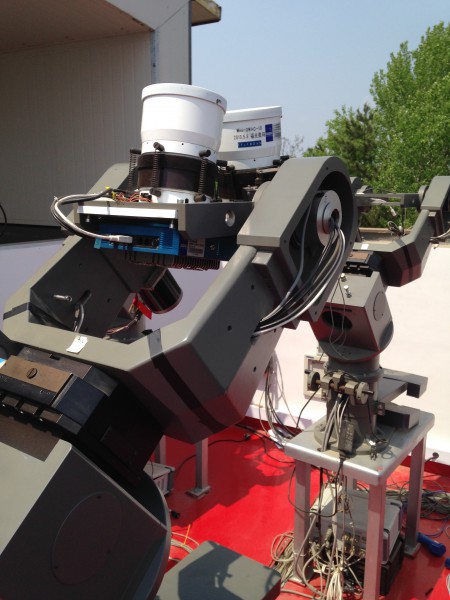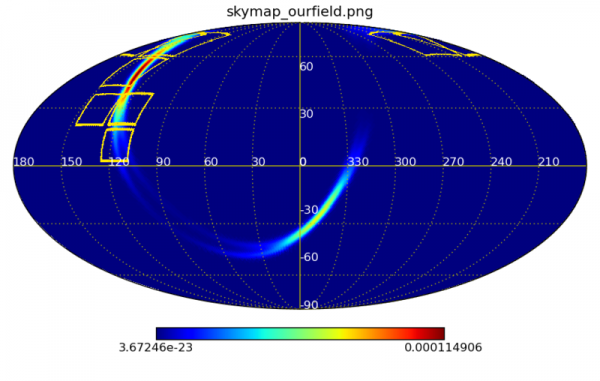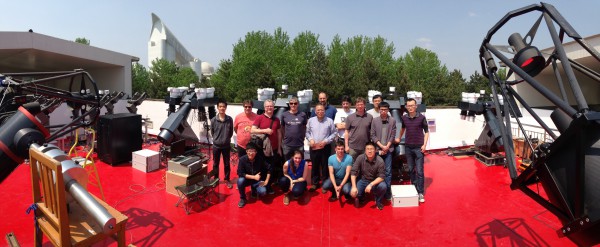The third gravitational wave event (GW170104) discovered by the LIGO-Virgo collaboration confirms the existence of massive stellar black holes with a mass larger than 20 solar masses. These two in-orbit stellar masses stars finally merged to form a compact object of nearly 50 solar masses. During this process, a huge amount of gravitational wave, predicted by the general relativity theory, is emitted. This is precisely the signal of this fusion that the two LIGO interferometers detected on earth for the third time.
Searching for an electromagnetic counterpart to such event is today a challenge, both on a observational side or on a theoretical aspect. Many multi-wavelength networks, on ground and in space, share this goal. Among them, the SVOM mission has started to survey the GW candidates with a dedicated instrument, the SVOM/mini-GWAC equipment, pathfinder towards a more complete SVOM instrument. Starting just a few hours after the communication to the scientific community of the GW position, the following text describes the different steps of this search.

GW170104
The gravitational wave event GW170104 has been detected on 4 January 2017 at 10:11:58 UTC by the LIGO-Virgo consortium with the twin advanced interferometers Hanford and Livingston located in the United States.
This event is the result of the coalescence of a pair of stellar-mass black holes with respectively 31.2(+8.4;?6.0) and 19.4 (+5.3;?5.9) solar masses. The source luminosity distance is 880 (+450;?390)??Mpc corresponding to a redshift of z=0.18 (+0.08;?0.07). The signal was measured with a signal-to-noise ratio of 13 and a false alarm rate less than 1 in 70?000 years.
Timeline and Localization error box
The GW alert has been delivered to the astronomical community with a delay of 6.3 h.
The initial 90% localization error box covers an area on the sky of 2065 deg2.
An update of the localization error box has been delivered 4 months later with a 22% reduction of the localization error box.
SVOM activity
As soon as the GW alert was delivered to the astronomical community (6h after the trigger time e.g 4 hours after the beginning of the Chinese night), the probability skymap was quickly digested in order to produce the follow-up observation plan.
The mini-GWAC telescopes covered 80% of the error box in 14exposures of variable duration between 1 and 3 hours.
The SVOM group reported their follow-up observations in a circular published at the end of the night.
SVOM/Mini-GWAC follow-up observations were unique in the optical band: SVOM/mini-GWAC performed the largest probability coverage of GW170401 localization in shortest latency for optical band.

At this time, we didn’t detect a relevant electromagnetic counterpart but for the future, we look forward the whole GWAC system (limit mag 16), in operation at fall 2017.
SVOM science is on the way !



